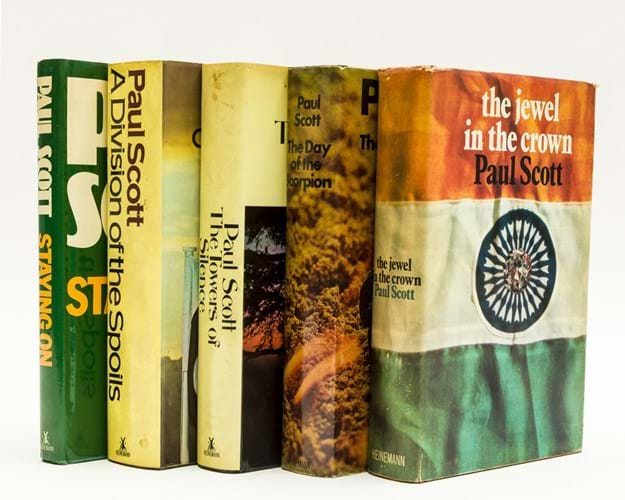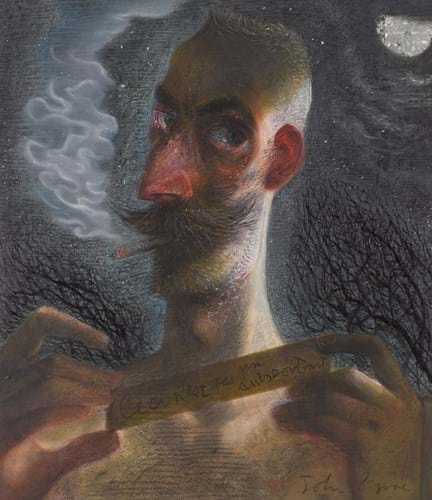1. George II Gainsborough chair – £29,000
Although now known as Gainsborough chairs, generous walnut and upholstered armchairs such as this one, pictured above, offered for sale by Locke & England in Leamington Spa on January 28, were often referred to by contemporaries as 'French’ chairs, as the most elaborate styles were based on French rococo.
This one is carved to the arms and cabriole legs with floral rosettes and acanthus and sits on muscular hairy paw feet. The English or French floral needlework is probably of the period c.1750.
The chair was deemed largely original and in a condition commensurate with its age. Estimated at a very attractive £3000-5000, the selling price was £29,000.
Similar chairs are often linked to the London furniture designer-maker Giles Grendey (1693-1780) based on their close similarity to chairs supplied by his workshop to several grand country houses, including those in the collection at Stourhead, Wiltshire.
2. Sèvres plates – £18,210
The sale at Quinns in Falls Church, Virginia on January 30 included an old private collection of Sèvres porcelain. Many pieces came with modest expectations. Chief among these was a lot of three green-ground plates with botanical decoration, each carrying marks from the first decades of the 19th century.
Estimated at just $200-400, these sold at $25,000 (£18,210).
Key to the appeal of this trio were two illustrious owners. Although outwardly similar these plates are from two well-known services: one from the so-called Service a Fleurs made for the Empress Josephine c.1809; and two from a dessert service c.1812 presented by Louis XVIII to Edward, Duke of Kent.
Louis, who had spent the final four of his 23 years of exile in England, had been recently restored to the French throne and gave this service of 249 pieces to the Duke on October 18, 1816. Later owned by the Duke's daughter, Queen Victoria, it passed by descent before it was sold at Christie's in 1945.
3. Stobwasser snuff box – £11,000
Georg Siegmund Stobwasser (1717-76) and his son Johann Heinrich Stobwasser (1740-1829) were among the many craftsmen who moved to Brunswick in the wake of the Seven Years’ War.
In its pomp, the ‘lacquerware manufactory’ they founded employed more than 50 people creating a wide range of papier-mâché and toleware luxuries. The signature Stobwasser production was the flat circular table snuff box decorated with miniature reproductions of popular Italian, French and Dutch paintings of the period.
They were much imitated but the best examples are signed inside with a distinctive red script, often with pattern number and sometimes with a subject name. Typically they were decorated by a succession of jobbing German artists that learnt their trade at the Stobwasser painting school.
The example offered at John Nicholson’s in Haslemere on January 28 was in the top tier of Stobwasser boxes and decorated with a local scene. Measuring around 3/5in (10cm) across it was inscribed inside the cover Ansicht des Birbaumschen Gartens zu Braunschweig (View of the Birch Tree Gardens at Brunswick).
It was estimated at £1000-1500 but sold to an online bidder from Germany at £11,000. Such prices are not unprecedented: a similar box offered for sale at Bamfords in Derby last September decorated with a vignette titled Vue du jardin du Palais-Royal près de la rotond sold to an online bidder from Brunswick for £20,000.
4. Paul Scott first editions – £8000
Five first editions by Paul Scott sold for a surprise £8000 (estimate £600-800) at Forum Auctions in London on January 28. They comprised the author’s best-known novels: the four volume sequence known as the Raj Quartet plus Staying On, his Booker Prize-winner that features several characters from the quartet and completes the series. All came in original boards and dust jackets and were graded as ‘excellent or near fine’ copies.
The first of the Raj Quartet, The Jewel in the Crown, was a signed presentation inscription from the author ‘To Nell and David’ and had been additionally signed by Scott on the title page. ‘David’ is David Higham, a friend and colleague of Paul Scott's at David Higham Associates literary agency. Staying On (1977) was similarly signed and inscribed.
5. John Byrne self portrait (or not) – £16,000 at Lyon & Turnbull.
The sale of Contemporary & Post-War Art held by Lyon & Turnbull in Edinburgh on January 27 included this key work from the oeuvre of John Byrne (b.1940) – the self portrait Ceci n’est pas un auto-portrait.
This 2ft 7in x 2ft 4in (78 x 72cm) oil and mixed media work of 2003 was featured on the front cover of the artist's monograph John Byrne: Art and Life by Robert Hewson (2011) and was included in the Byrne retrospective at the Scottish National Portrait Gallery. The title is clear allusion to the famous work Ceci n'est pas une pipe by the Surrealist René Magritte, to whom this work is an homage.
In 1967, when Byrne was in his late 20s and a struggling artist working as a carpet designer in a factory, he penned a letter to his hero, addressing it simply 'Margritte, Brussels’. He dispatched it, probably with little hope, in the post but extraordinarily, the letter found its way to Magritte, who touchingly took the time to write a supportive response and message of solidarity.
The portrait, estimated at £10,000-15,000, sold for £16,000.










